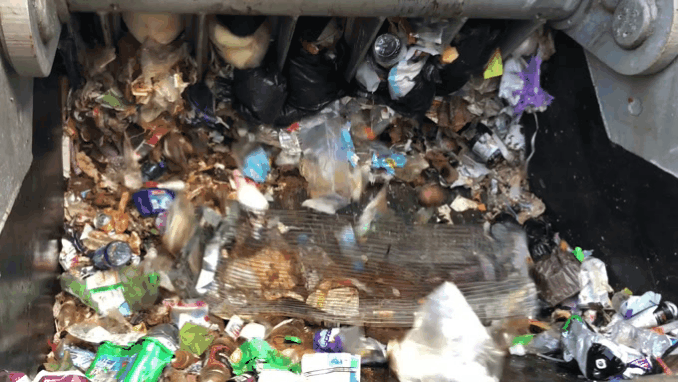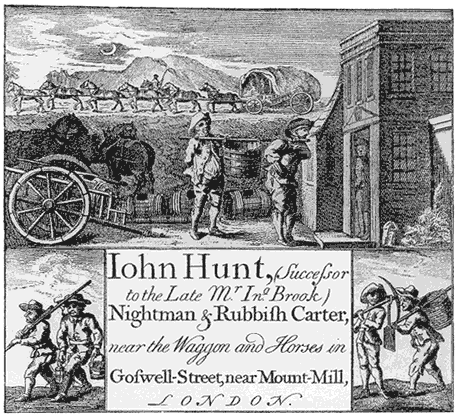|
Preserved Shelvoke And Drewry Vehicles
Shelvoke and Drewry, Shelvoke & Drewry was a British manufacturer of specialised commercial vehicles. Founded in 1922 to produce the SD Freighter Shelvoke & Drewry ceased trading in 1991. It was best known for its innovative waste collection vehicles, which were once the preferred choice of municipal authorities in the UK. It also manufactured fire apparatus, fire engines, buses and fork-lift trucks. The company ceased trading in 1991, however a large number of S&D vehicles remain either in operational service or are in preservation in museums or by private individuals. Below is a listing of known preserved Shelvoke and Drewry vehicles. Chassis Designations From the start of production of the W Type each Vehicle was given a letter prefix at the start of their chassis number. The table below shows the know prefixes used and where known, the meaning. Some letters seem to have dropped once that item had become standard Eg. Air brake (road vehicle), Air brakes SD Freighters T ... [...More Info...] [...Related Items...] OR: [Wikipedia] [Google] [Baidu] |
Shelvoke And Drewry
Shelvoke and Drewry was a Letchworth, Hertfordshire manufacturer of special purpose commercial vehicles. It was best known for its innovative waste collection vehicles that were the preferred choice of municipal authorities in the UK together with their gully emptiers, cesspool cleaning vehicles and street watering and washing vehicles.Shelvoke And Drewry Limited. ''The Times'', Monday, 26 April 1937; pg. 23; Issue 47668 Cable drum carriers were supplied to the General Post Office and vehicles and ground equipment built for the Royal Air Force. Shelvoke and Drewry also manufactured fire engines, buses and fork-lift trucks. The Shelvoke and Drewry Freighter The business began in 1921 as a partnership of Harry Shelvoke and James Drewry, both of whom had successful careers in commercial vehicle design and manufacture. At that time, municipal refuse vehicles were almost all horse-drawn, uneconomical and inconvenient and required the use of ladders. In their "S D Freighter", Shel ... [...More Info...] [...Related Items...] OR: [Wikipedia] [Google] [Baidu] |
Worthing Tramocars
The Worthing Tramocars formed part of the public transport network in Worthing, a seaside resort in West Sussex, England, during the 1920s and 1930s. The vehicles were converted dustbin lorries manufactured by Shelvoke and Drewry and adapted for use by elderly people. "The service was the brainchild" of Bill W. R. Gates, a businessman who had made his fortune in New Zealand before returning to his native England. He registered the name Tramocar as a trademark and procured and converted 13 vehicles for use on various routes around the town. Tramocar services ran from 1924 until 1942—latterly operated by bus company Southdown Motor Services, which introduced a further two Tramocars—but a replica vehicle is still operational at a museum in West Sussex. Background Until the late 18th century Worthing was a "small and primitive settlement" in the parish of Broadwater, consisting of a manor house, modest housing for fishermen, common land and some fields. The development of n ... [...More Info...] [...Related Items...] OR: [Wikipedia] [Google] [Baidu] |
Corgi Toys
Corgi Toys (trademark) is the brand name of a range of die-cast toy vehicles created by Mettoy and currently owned by Hornby Railways, Hornby.Retail on ''The Guardian'' The Mettoy ("Metal Toy") company was founded in 1933 by German people, German émigré Philip Ullmann in Northampton, England, where he was later joined by South African people, South African-born Germans in Africa, German Arthur Katz, who had previously worked for Ullmann at his toy company Tipp and Co of Nuremberg. After dabbling for some years in the model car market, they decided to produce a range of die-cast toy vehicles as competition to Meccano's Dinky Toy, Dinky model cars, which had dominated the British market for many years. "Corgi Toys" were introduced in the UK in July 1956 and were manufactured in Swansea, Wales, for 27 years before the company went ... [...More Info...] [...Related Items...] OR: [Wikipedia] [Google] [Baidu] |
Malta
Malta ( , , ), officially the Republic of Malta ( mt, Repubblika ta' Malta ), is an island country in the Mediterranean Sea. It consists of an archipelago, between Italy and Libya, and is often considered a part of Southern Europe. It lies south of Sicily (Italy), east of Tunisia, and north of Libya. The official languages are Maltese and English, and 66% of the current Maltese population is at least conversational in the Italian language. Malta has been inhabited since approximately 5900 BC. Its location in the centre of the Mediterranean has historically given it great strategic importance as a naval base, with a succession of powers having contested and ruled the islands, including the Phoenicians and Carthaginians, Romans, Greeks, Arabs, Normans, Aragonese, Knights of St. John, French, and British, amongst others. With a population of about 516,000 over an area of , Malta is the world's tenth-smallest country in area and fourth most densely populated sovereign cou ... [...More Info...] [...Related Items...] OR: [Wikipedia] [Google] [Baidu] |
Revopak
The Revopak is a type of waste collection vehicle manufactured by the British company Shelvoke and Drewry. Introduced in 1971, the Revopak was a British-built clone of the French Bennes-Ray "Superpac".{{cn, date=April 2020 It was one of the first vehicles to address the problem of compacting and destroying the high content of packaging materials now found in domestic refuse. By using a huge, hydraulic-powered rotating rake with large steel tines, refuse was scooped up from the loading hopper and forced through a set of stationary tines. The rotation of the rake increases the density of the load by continuously lifting the waste, mutilating it through the stationary tines, and then dropping it and repeating the cycle until it is small enough to be forced into the main body, where it is compacted, thus reducing the space required to dump it at the landfill site. Two generations of the Revopak were produced - the early 1971-1973 models used hydraulic motors which drove the comp ... [...More Info...] [...Related Items...] OR: [Wikipedia] [Google] [Baidu] |
FBU 227 K TBN Pakamatic
FBU may refer to: * Burundian franc * French Blue (airline) * Fire Brigades Union in the UK * Five Branches University, in California, United States * Oslo Airport, Fornebu Oslo Airport, Fornebu ( no, Oslo lufthavn, Fornebu), was the primary international airport serving Oslo and Eastern Norway from 1 June 1939 to 7 October 1998. It was then replaced by Oslo Airport, Gardermoen, and the area has since been redevelo ..., now defunct * Swedish Federation for Voluntary Defence Education and Training * Ukrainian Basketball Federation {{Disambiguation ... [...More Info...] [...Related Items...] OR: [Wikipedia] [Google] [Baidu] |
251 BJD TZ Recovery Vehicle
51 may refer to: * 51 (number) * The year ** 51 BC ** AD 51 ** 1951 ** 2051 In contemporary history, the third millennium of the anno Domini or Common Era in the Gregorian calendar is the current millennium spanning the years 2001 to 3000 ( 21st to 30th centuries). Ongoing futures studies seek to understand what is l ... * ''51'' (film), a 2011 American horror film directed by Jason Connery * " Fifty-One", an episode of the American television drama series ''Breaking Bad'' * ''51'' (album), a 2012 mixtape by rapper Kool A.D. * "Fifty One", a song by Karma to Burn from the album '' V'', 2011 {{Numberdis ... [...More Info...] [...Related Items...] OR: [Wikipedia] [Google] [Baidu] |
892BWX Shelvoke & Drewry TY
{{Numberdis ...
89 may refer to: * 89 (number) * Atomic number 89: actinium Years * 89 BC * AD 89 * 1989 * 2089 * etc. See also * * List of highways numbered A ''list'' is any set of items in a row. List or lists may also refer to: People * List (surname) Organizations * List College, an undergraduate division of the Jewish Theological Seminary of America * SC Germania List, German rugby union ... [...More Info...] [...Related Items...] OR: [Wikipedia] [Google] [Baidu] |
Nightsoil
Night soil is a historically used euphemism for human excreta collected from cesspools, privies, pail closets, pit latrines, privy middens, septic tanks, etc. This material was removed from the immediate area, usually at night, by workers employed in this trade. Sometimes it could be transported out of towns and sold on as a fertilizer. Another definition is "untreated excreta transported without water (e.g. via containers or buckets)". The term "night soil" is largely an outdated term, used in historical contexts. The modern term is "fecal sludge"; fecal sludge management is an ongoing challenge, particularly in developing countries. Night soil was produced as a result of a sanitation system in areas without sewer systems or septic tanks. In this system of waste management, the human feces are collected without dilution with water. Collection and disposal Feces were excreted into a container such as a chamber pot, and sometimes collected in the container with urine and oth ... [...More Info...] [...Related Items...] OR: [Wikipedia] [Google] [Baidu] |
701 DUR 'W' Type Tanker
7 (seven) is the natural number following 6 and preceding 8. It is the only prime number preceding a cube. As an early prime number in the series of positive integers, the number seven has greatly symbolic associations in religion, mythology, superstition and philosophy. The seven Classical planets resulted in seven being the number of days in a week. It is often considered lucky in Western culture and is often seen as highly symbolic. Unlike Western culture, in Vietnamese culture, the number seven is sometimes considered unlucky. It is the first natural number whose pronunciation contains more than one syllable. Evolution of the Arabic digit In the beginning, Indians wrote 7 more or less in one stroke as a curve that looks like an uppercase vertically inverted. The western Ghubar Arabs' main contribution was to make the longer line diagonal rather than straight, though they showed some tendencies to making the digit more rectilinear. The eastern Arabs developed the digit f ... [...More Info...] [...Related Items...] OR: [Wikipedia] [Google] [Baidu] |




